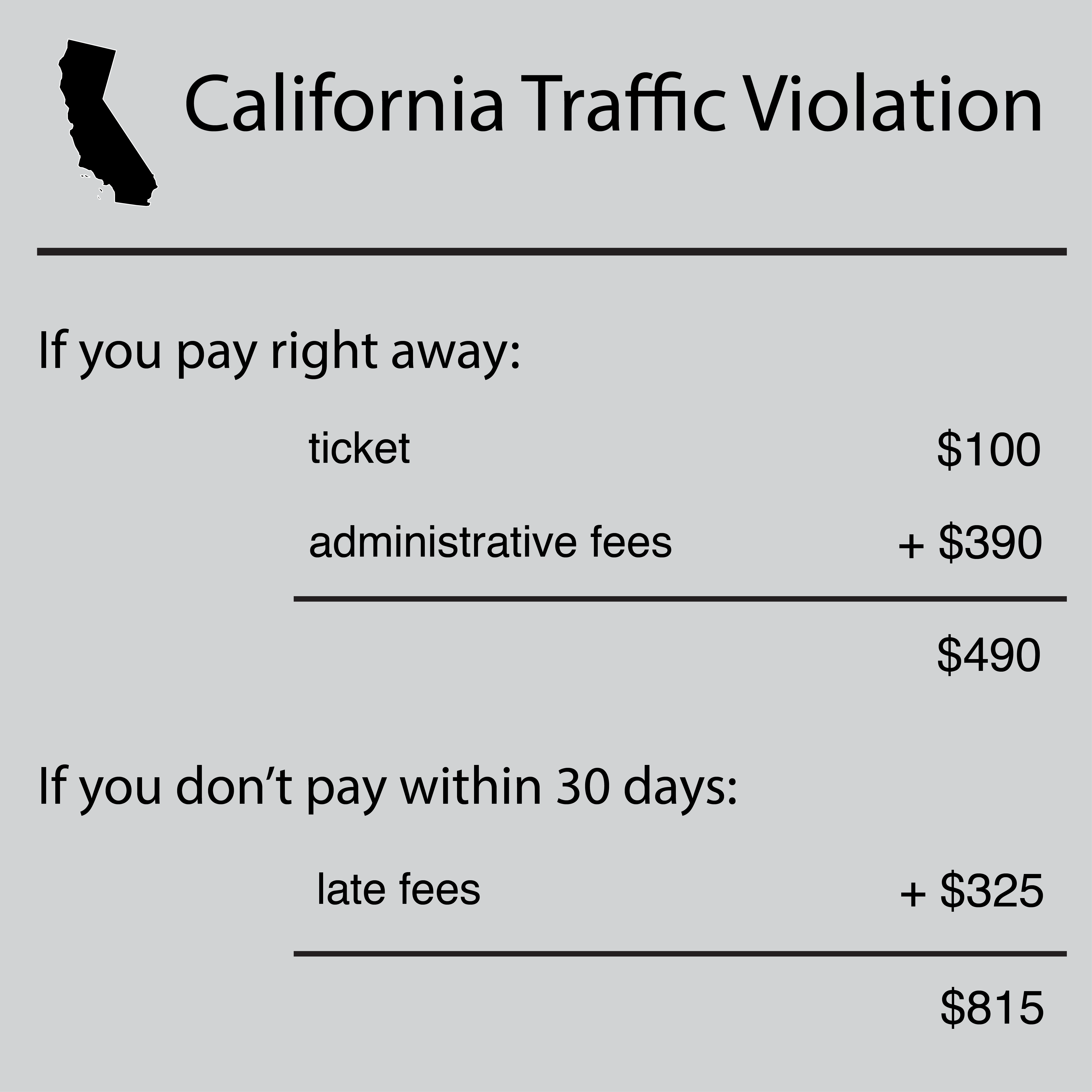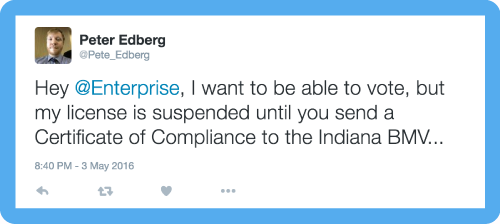Causes of License Suspension
License suspensions were originally designed to keep dangerous drivers off the roads, but in recent decades state legislatures around the country have added a lengthy list of offenses that can result in a license suspension, many of which have nothing to do with safety. The purpose of these suspensions was to coerce payment or create a disincentive for illegal behavior.
Reasons for license suspension fall into two general categories: highway safety reasons, and non-driving related reasons. Highway safety suspensions are issued for medical conditions (like epilepsy), excessive points, and drunk, impaired, or otherwise reckless driving.
Non-driving related suspensions are often referred to as “social non-conformance” suspensions, and they can be for reasons like child support delinquency, failure to pay fines, and drug charges. Almost 40 percent of suspensions nationally were for these social non-conformance reasons according to a report issued in 2013 by the American Association of Motor Vehicle Administrators (AAMVA), which analyzed sample data from eight states1. Other reports suggest it’s even higher. Analyses in California2, Florida7, Wisconsin8, and Vermont9 all showed that more than half of suspensions were for failure to pay or social non-conformance reasons.
Suspension and Failure to Pay Info by State
The most common social non-conformance reasons for suspension include child support delinquency, drug charges, failure to appear, failure to pay non-moving violations, failure to pay other fines and fees, alcohol possession by a minor, truancy, fuel theft, insurance lapses, and many other similar offenses
In New York, advocating the overthrow of government is grounds for license suspension. In more than a dozen states licenses can be suspended for failure to pay student loans. In California, Florida, and Texas vandalism or graffiti are grounds for suspension.
The best available national data on license suspension rates, compiled by the AAMVA, put the suspension rate at more than 7 percent,1 but they based their analysis on a data set that is about 10 years old. The rate is much higher than that now in places like California, Florida, and Texas, where recent state-wide reports have shed light on the extent of the issue.
Many experts say the upward trend in license suspensions is a lingering result of the 2008 recession. In the wake of the recession, as local and state budgets were losing revenue, many local governments increased their fines and fees to try to fill those budget holes.2
This issue was brought to national attention in the wake of protests in Ferguson, Missouri in response to the police killing of Michael Brown. The U.S. DOJ released a report slamming the local court systems for financing large portions of their budgets through fines and fees issued to their poorest residents.10
Increased fees make it less likely that people can afford to pay their tickets. So when more people don’t pay, more people get their licenses suspended.
In addition to the dozens of reasons why suspensions might be issued, some are the result of , , or violations .
For example, many violations are tied to the car and not the driver, so it is common for someone to get their license suspended for failure to pay a ticket that was issued when someone else was driving their car. These issues often arise in situations when multiple people share the use of a car, or .
Red light cameras, speed cameras, and cameras at tollbooths issue tickets to the person and address associated with the license plate. Parking tickets are also
In theory drivers are notified by mail when they receive an automated ticket, or when their ticket is past due, but that system is . A disproportionate number of young and low-income people are highly transient and many do not have a permanent address on file where they can reliably receive mail. So when speeding, red light, and parking tickets are issued they may never actually be received by the driver.
In some cases, drivers might not know they have an unresolved ticket, which triggers late fees, and ultimately a suspension. And if drivers are not receiving notices of tickets, they likely will not receive notices to inform them that their license is suspended, causing further problems.
Drivers face an additional level of risk for license suspension if their car is not properly maintained. Tickets can be issued for , or damage like a broken windshield. These tickets, called “fix-it tickets,” disproportionately affect low-income people because the driver has to pay to fix the car in addition to the cost of the ticket.2 If they can’t pay both the ticket and to fix their car, they risk further tickets, fines, and ultimately a license suspension.
It is also possible for someone to be issued a suspension if they have never even had a driver’s license, an issue that complicates data about suspensions. Minors can be issued a , even when they haven’t yet received a driver’s license. Underage drinking and , which will appear on a person’s record even if they never applied for a driver’s license in the first place. Once a suspension is on record the person has to pay and wait out the length of the suspension if they attempt to get a license later on.








